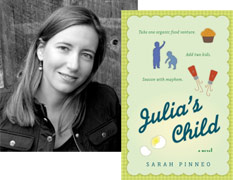Part 1: Mechanics will step you through the (occasionally counter-intuitive) usefulness of various features, while Part 2: Dynamics will cover the philosophy of staying zen about the star ratings system and an author's place in the feedback loop.
Goodreads.com Under the Hood
Like Amazon.com, Goodreads is a giant database of books in print. Readers create a login, and then add books to their virtual "shelves" in order to track their personal experiences with books. My Goodreads bookshelves currently contain 484 titles, including 322 that I've read, and more than 150 that I aspire to reading.
Goodreads is also a database of readers. Members can friend each other at will. Just as on Facebook, friendships do not have to be accepted.
But friending is only one way to "meet" people on Goodreads. The other way is to join a "group." Groups are usually organized around interests. There are groups devoted to YA, to fantasy, to cookbooks and yoga. And there are a few groups organized by geographic location.
To help Goodreads members find your book, consider any of the following:
- Set yourself up as an author on Goodreads. To do this, your book must already be part of the Goodreads database. Click on the author (that's you!) and follow the links to the Goodreads Author Program. In essence, you're claiming your book as your own. It will be linked to your personal user profile.
- Friend people (you can start with me if you wish) who read in your genre, and then link your personal blog to Goodreads. Why? Because when your friends login to Goodreads, they see a feed of friend activity. And your blog posts will become part of your feed. This is a very valuable way to make sure that readers find you, remember you and keep up with you.
- Join a group which is genuinely interesting to you, and then contribute to it. Keep up with discussions, and contribute in a meaningful way. That is: don't spam the group with nudges to buy your book. That will only make enemies.
- Make sure your book is part of a "list." Example: my novel is part of a list called Foodie Novels. Any Goodreads user who clicks on the list, presumably after enjoying another foodie novel, will be taken to a list containing my novel too. Isn't that handy?
- Add quotes from your book to the quotes database at Goodreads. If another user "likes" your quote, it will show up on his or her profile.
- List a giveaway for your book the month before it comes out.
Each of those suggestions helps readers find you, because it isn't enough to simple create a profile and expect to be found. Goodreads is a big place, so give it some time. Fill your shelves with books that genuinely interest you. (As a reader, I'm suspicious of friend requests from people with 1,574 friends and 8 books on their shelves. Just sayin'.)
Not only will you potentially attract readers, but you may discover how useful the website really is. I keep my "to read" list there, and use the iphone app to carry my ambitions into the local library in a portable way.
Until next time, happy Goodreading!
Until next time, happy Goodreading!
In Part II of this series we will handle the, er, emotional impact of Goodreads reviews, and frame our thinking around healthy success. (Hint: 5 star reviews aren't the only ones worth having.)

Sarah Pinneo is a novelist, food writer and book publicity specialist. Her most recent book is Julia’s Child. Follow her on twitter at @SarahPinneo.
4 comments:
Thank you, Sarah, for this. I'm still figure out all the features. Can't wait to read part two.
Excellent information. Thank you!
Thanks Sarah. Goodreads is the place I have found the most readers/buyers for my novel outside of friends and family. It is such a helpful site for authors trying to build an audience. Your tips are great.
Thanks, guys! Goodreads is incredibly powerful, but takes some figuring out. Happy to help.
Post a Comment